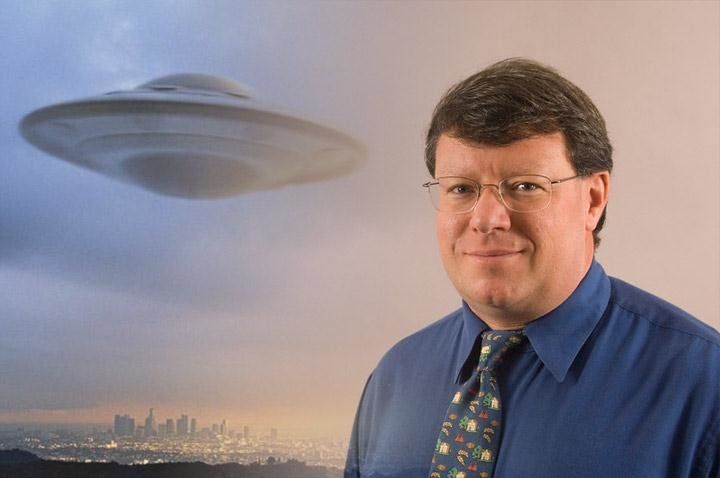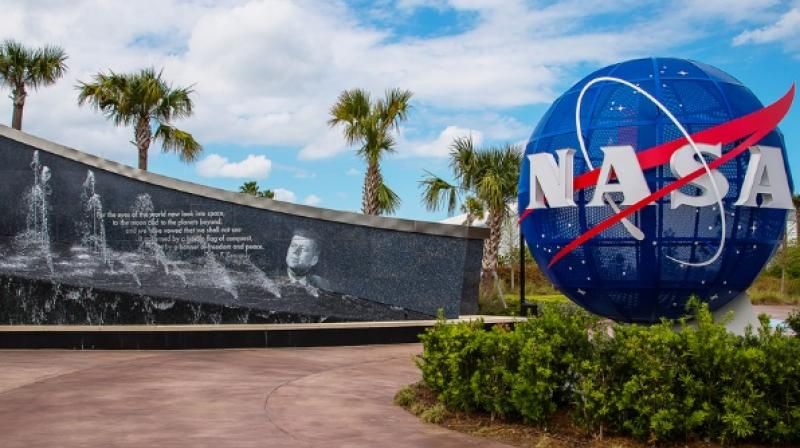Scientist Kevin Knuth Looks at the Physics of UFOs
Article by Jerry Clayton June 19, 2021 (tpr.org)
• Kevin Knuth (pictured above) is an associate professor of physics at the University of NY at Albany and a former NASA research scientist at the Ames Research Center. He’s authored a paper titled ‘Estimating Flight Characteristics of Anomalous Unidentified Aerial Vehicles’, which reviewed case studies of UFO sightings from 1951 to present day, including the sightings of objects near the USS Nimitz aircraft carrier in 2004. All the reports consist of reliable eyewitness testimony and, more importantly, corroborating radar data.
• In the Nimitz case, objects were tracked on radar several times, descending from 28,000 feet, which is about five miles up, down to sea level in about 8.7 seconds. “So those accelerations we estimated were on the order of about 5000 G’s, which is 5,000 times the acceleration of gravity, which is really crazy,” said Knuth. “Our fighter jets can really only handle about 13 G’s before the wings get ripped off.” At midpoint on the way down, the craft would have been traveling at approximately 35,000 miles per hour through the air and without a sonic boom.
• Knuth says he’s disappointed there has not been more serious study done by scientists. “We’ve had 70 years, three quarters of a century where we’ve had these things flying in our airspace. They show up in military bases. They show up over nuclear weapons sites, and virtually nothing is known about them. …[E]ventually when we finally learn what these things are — this is going to be one of the greatest intelligence failures in history.”
• Knuth believes that these UFOs could be built by a government or an aerospace company, “except for a few important points.” “One is the accelerations are really anomalous to the point where it’s really not clear how the physics would work in that case. So, whoever has been making these things would have had to do not just have one technological leapfrog, but it would be multiple technological leapfrogs. And that would be quite surprising.” “ And more importantly, these things have been observed before. People have been able to fly.”
• What does Knuth expect from the Senate Intelligence Committee UAP Task Force report? “I expect that there probably will be a public component to the report … [which] will probably leave things a bit up in the air, whereas I would hope that the classified version would actually have more information.” If the report hints at anything other than worldly technology, [that] information will be slow to be released. “Some of this might be a little too shocking for us to handle all at once,” says Knuth. “[S]o they might instead try to ease us into it a bit.”

In case you may have missed it, a big news story has been bubbling to the surface.

The U.S. Navy confirmed that earlier leaked videos did, in fact, show what they call UAP’s or unidentified aerial phenomena. The Pentagon has admitted they’ve been studying them and recently NASA has announced its own investigation. So it seems as if the government is concerned about the national security threat these phenomena may pose.
Academia has been slow to take up the subject, possibly for fear of ridicule, but even that is changing. Professor Kevin Knuth is an associate professor of physics at the University in Albany. Among other things, he is a former NASA research scientist at the Ames Research Center.

Knuth authored a paper titled Estimating Flight Characteristics of Anomalous

Unidentified Aerial Vehicles. It included case studies from 1951 to present day, which included sightings of objects near the USS Nimitz aircraft carrier in 2004.
All the reports consist of reliable eyewitness testimony and, more importantly, corroborating radar data. In the Nimitz case, objects were tracked on radar several times, descending from 28,000 feet, which is about five miles up, down to sea level in about 8.7 seconds. How fast is that? Knuth did the math.

“So those accelerations we estimated were on the order of about 5000 G’s, which is 5,000 times the acceleration of gravity, which is really crazy. Our fighter jets can really only handle about 13 G’s before the wings get ripped off,” he said.
At midpoint on the way down, the craft would have been traveling at approximately 35,000 miles per hour through the air and without a sonic boom. Knuth says he’s disappointed there has not been more serious study done by scientists.
“For me, it’s a little disconcerting.” he said. “We’ve had 70 years, three quarters of a century where we’ve had these things flying in our airspace. They show up in military bases. They show up over nuclear weapons sites, and virtually nothing is known about them. And I look at this as probably, I think, eventually when we finally learn what these things are — this is going to be one of the greatest intelligence failures in history,” said Knuth.
FAIR USE NOTICE: This page contains copyrighted material the use of which has not been specifically authorized by the copyright owner. ExoNews.org distributes this material for the purpose of news reporting, educational research, comment and criticism, constituting Fair Use under 17 U.S.C § 107. Please contact the Editor at ExoNews with any copyright issue.




